This is the seventeenth in a series of posts on color reproduction. The series starts here. You don’t have to read the whole thing to make sense of this post, but it will probably help if you read yesterday’s post.
Today, I’m going to explore white point conversion errors with perfect (simulated) cameras and raw converters, I started out with the spectral reflectances of each of the Macbeth patches, and illuminated them with several CIE D illuminants. Where the CIE specifies a table, I used those. Where it does not, I used Jerker Wagberg’s Matlab software package optprop (highly recommended) to perform interpolations and extrapolations.
Here’s the table-derived D65 spectrum in blue and the 6500K black body spectrum in red:
the table-derived D50 spectrum in blue and the 5000K black body spectrum in red:
And here’s an optprop-generated D40 spectrum and a black body one:
I chose Adobe RGB as the output color space. Since the white point of Adobe RGB is D65, the errors with that illuminant should be very low.
Here are the errors with a series of D-derived illuminants and von Kries white point conversion:
See yesterday’s post for a description of the error metrics.
Here are the errors with a series of D-derived illuminants and Bradford white point conversion:
And finally, ere are the errors with a series of Planckian black body illuminants and Bradford white point conversion:
I’m guessing that incandescent lights have spectra similar to black body radiators. Xenon flash tubes have spectra similar to a D50 or D55 radiator. I know of no standard photographic light that puts out the Adobe RGB standard white point illuminant, D65. You can see that the errors in converting white points far from the Adobe RGB white point can be significant.
All this makes me question what should the precise goal of Macbeth color checker testing be if the illuminant isn’t the same as the white point of the output color space. More on that soon, I hope.
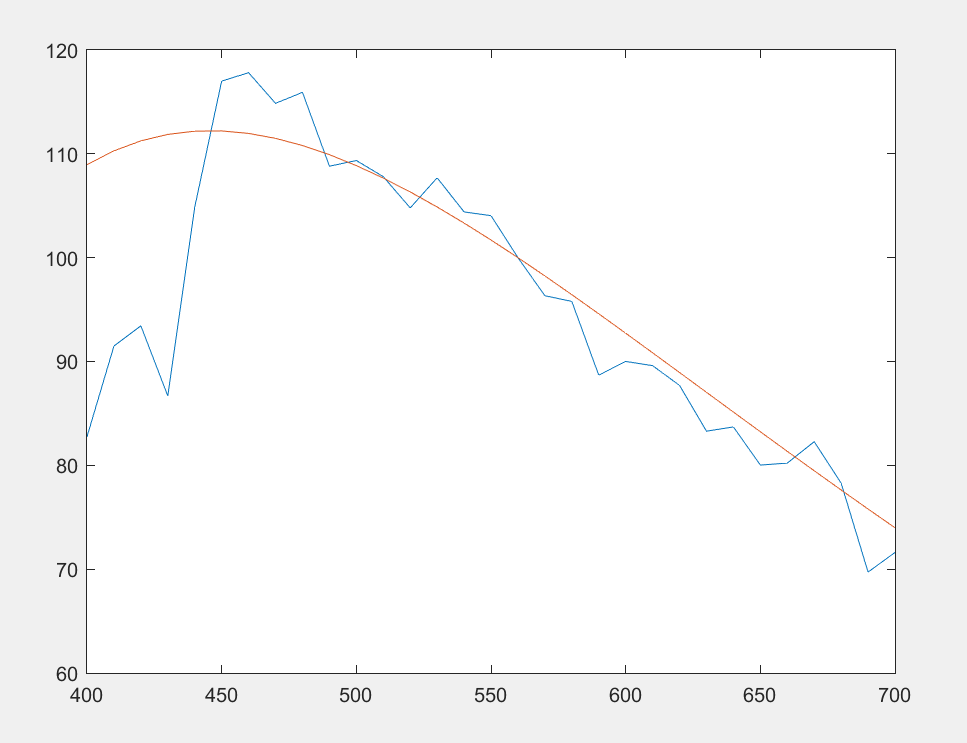
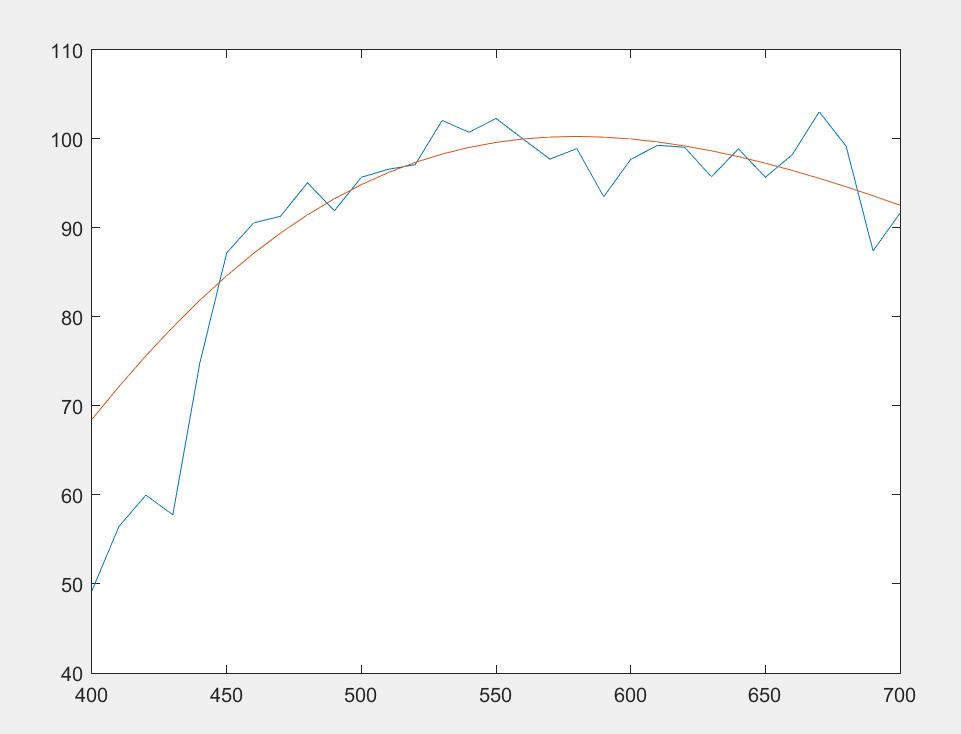
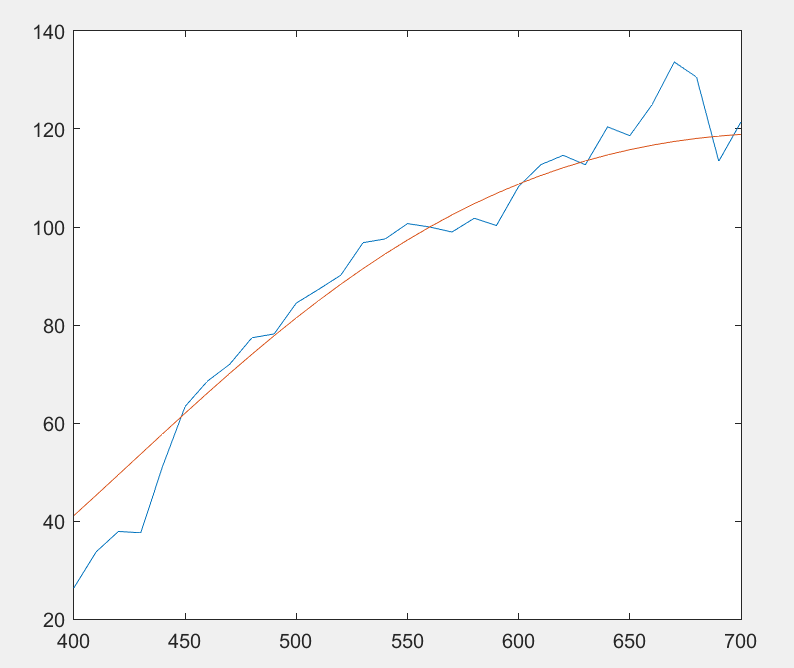
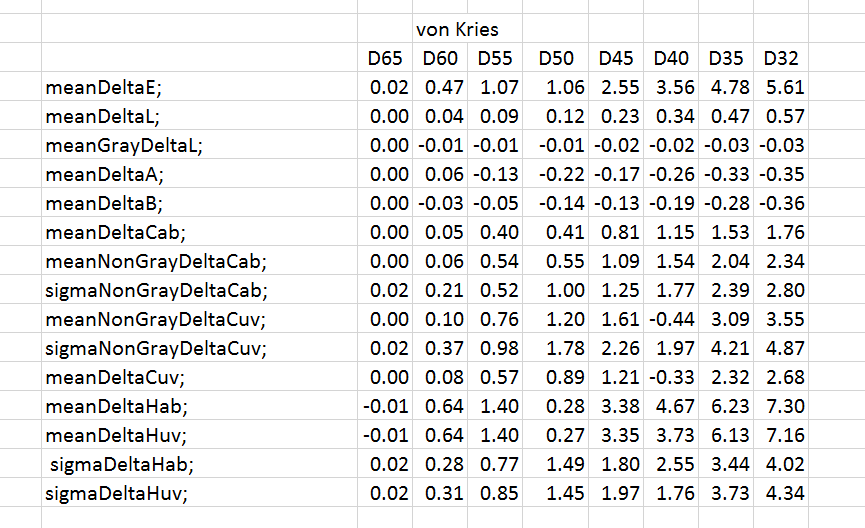
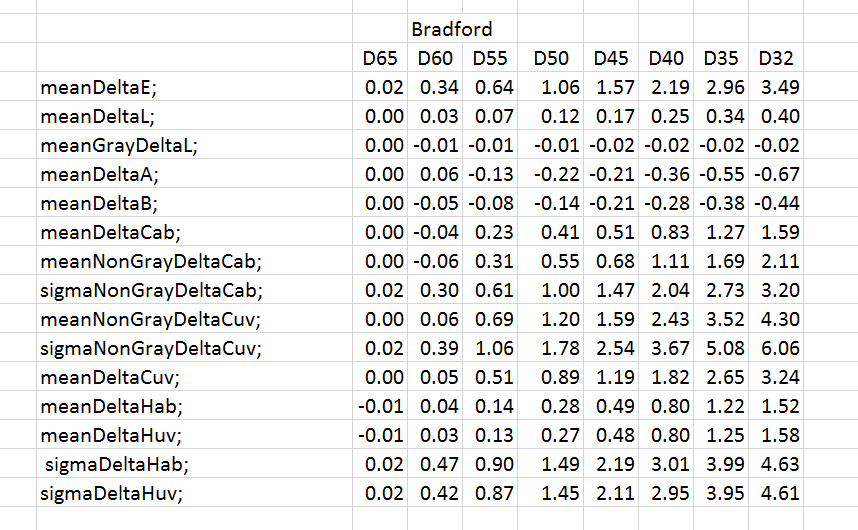
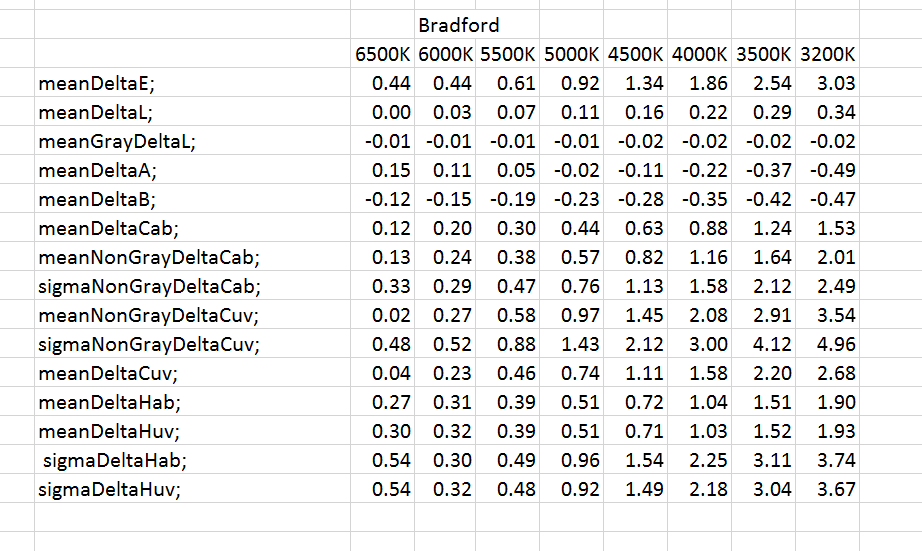
>I know of no standard photographic light that puts out the Adobe RGB standard white point illuminant, D65.
this was discussed @ LuLa in DCamProf topic = http://www.liulabs.com -> http://www.liulabs.com/Daylight.htm -> price of the D65 (non Xenon = MR16 at 12 V + 2 stacked filter + some accessories) is $299, plus $9.99 S/H…